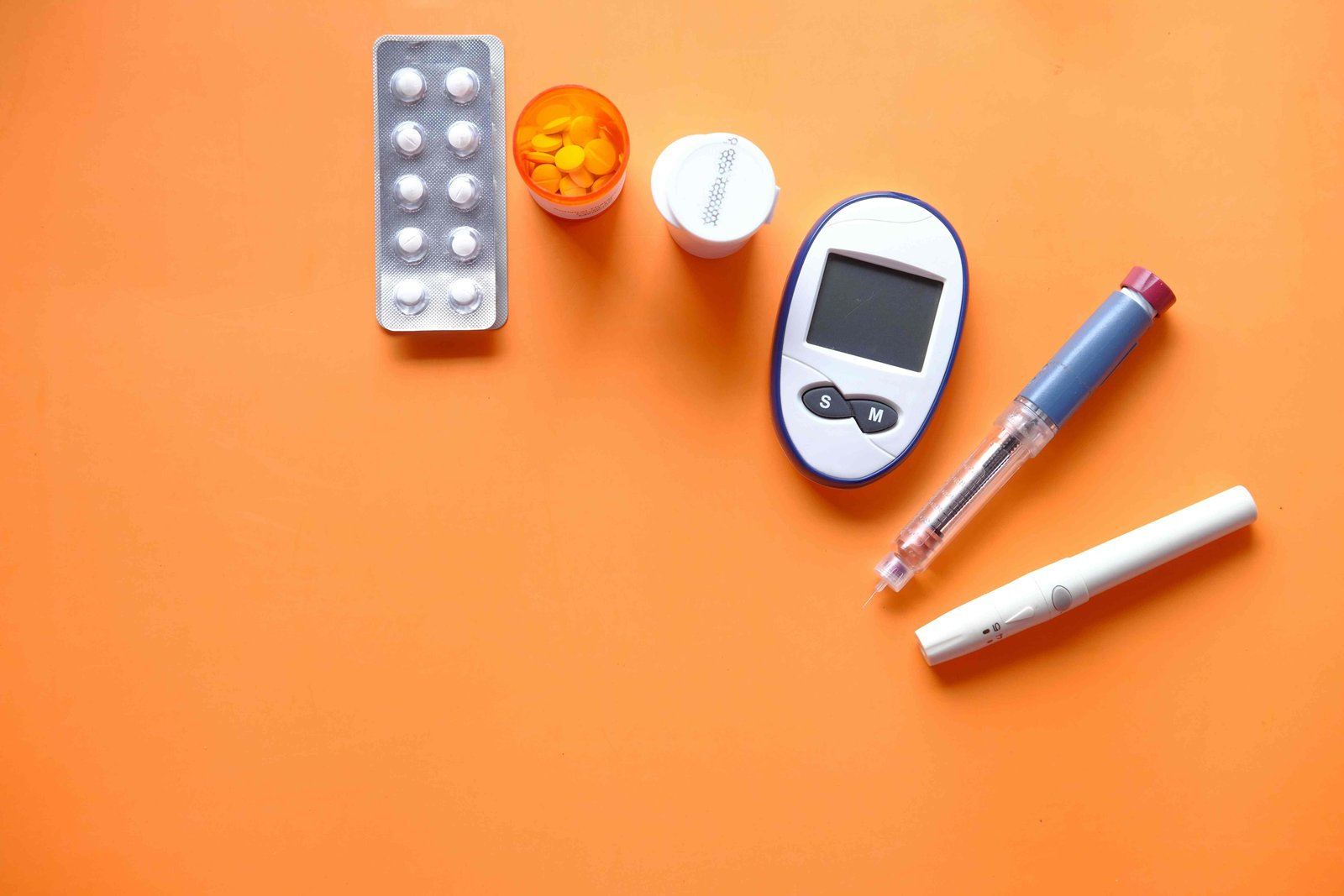Could Early Lifestyle Interventions Change the Course of Type 2 Diabetes?
18 September 2025 | Thursday | News

According to the Centers for Disease Control and Prevention (CDC), over 38 million Americans have diabetes. Of these, around 90% to 95% have Type 2 diabetes. Although it is usually diagnosed in adults over 45, the prevalence in the younger population is also increasing.
The reasons are complex, ranging from sedentary lifestyles to unhealthy diets and genetic predispositions. Alongside personal struggles, diabetes places enormous strain on healthcare systems, from direct treatment costs to long-term complications.
The ripple effects reach beyond healthcare, influencing workforce productivity and overall quality of life. The critical question is whether this trajectory can be altered with early action rather than relying heavily on medical interventions later in life.
In this article, we will explore whether early lifestyle interventions can truly alter the course of Type 2 diabetes.
The Case for Prevention Over Treatment
Evidence from clinical studies shows that early changes in diet, physical activity, and weight management can help with type 2 diabetes.
A ScienceDirect study notes that two nutritional strategies are often proposed. They are caloric restriction and managing macronutrient balance. However, these nutrition interventions need to be tailored to meet an individual’s specific needs and goals.
While lifestyle changes are important, pharmacological treatment cannot be ignored. Therefore, knowing both aspects has become crucial for managing and preventing Type 2 diabetes. This significance can also be seen in programs like a Doctor of Pharmacy.
According to the University of Findlay, pharmacists with such in-depth knowledge can help improve patients’ lives. They can do this through practice, lifelong learning, and service.
A well-structured Doctor of Pharmacy program prepares graduates to dispense medications, counsel patients, interpret clinical evidence, and contribute meaningfully to diabetes prevention strategies. When pharmacists are equipped to engage patients in conversations about lifestyle choices, the healthcare system benefits from an expanded frontline of professionals.
Combining pharmacological consultation with lifestyle changes can help prevent the condition rather than treating it. Once type 2 diabetes develops, management often requires lifelong medication and frequent monitoring, with costs accumulating year after year. Preventive measures, while sometimes challenging to implement, have the potential to reduce these burdens significantly.
Lifestyle Interventions in Action
Community-based workshops focused on nutrition education and exercise have helped participants lower their blood sugar levels and improve overall fitness. A prime real-world example is the implementation of the Diabetes Prevention Program (DPP) in the USA.
According to the American Diabetes Association, the DPP implementation demonstrated that structured lifestyle coaching can reduce the risk of developing diabetes. The program is proven to reduce risks by an average of 58%. Moreover, it reduces risks by 71% in the case of those aged over 60.
Similar results have been observed in Europe and Asia, where culturally adapted interventions have demonstrated success in lowering incidence rates. An NCBI study notes that these early interventions can also help with all-cause mortality in prediabetic patients. The meta review of seven studies concluded that an effective intervention reduced mortality by 17% in individuals without a history of cardiovascular disease.
In some regions, primary care providers are incorporating dietitians and fitness coaches into standard care teams. This makes preventive advice a routine part of healthcare visits. This model normalizes conversations about food, exercise, and stress management in ways that go beyond the traditional check-up.
These small but meaningful shifts underscore how early intervention can prevent progression to chronic disease. They also emphasize the need for more widespread adoption.
Barriers That Still Exist
Despite strong evidence, access to preventive programs remains limited. Socioeconomic status, geography, and cultural differences often determine who benefits from early intervention.
Urban centers may offer more resources, but rural areas frequently lack structured programs or trained professionals who can provide guidance. Even when services are available, patients may face barriers such as transportation issues, limited childcare, or the inability to take time away from work.
According to a Jama Network study, several social and structural factors also present challenges. Lifestyle changes require daily effort, and sustaining them over the years can be difficult without ongoing encouragement. When it comes to women, childcare commitments can also prevent lifestyle changes, as noted in an NCBI study.
Research suggests that people are more successful when they have consistent contact with health professionals and peer groups. Yet, these support structures are not always built into healthcare systems. Without reinforcement, even the most promising interventions risk falling short.
Technology as a Support System
Digital health tools are beginning to reshape diabetes prevention strategies, offering new ways to keep patients engaged and informed.
Mobile applications, wearable devices, and telehealth services have all contributed to more personalized support. These tools provide real-time feedback, allowing patients to see the direct impact of their choices on blood sugar levels and overall health.
For providers, technology offers an opportunity to monitor progress remotely and intervene before problems escalate. Some healthcare systems are experimenting with integrating wearable data into electronic health records, creating a fuller picture of patient health between visits.
However, the success of these innovations depends on accessibility and digital literacy, making it important to design solutions that are inclusive, affordable, and user-friendly.
Frequently Asked Questions
Can stress management play a role in preventing type 2 diabetes?
Yes, stress management can influence the risk of developing type 2 diabetes. Chronic stress affects hormone levels, particularly cortisol, which can lead to elevated blood sugar and weight gain. Practices such as mindfulness, yoga, or regular relaxation routines may reduce this risk and complement other preventive lifestyle changes.
At what age should people start thinking about preventing type 2 diabetes?
Prevention ideally begins early in life, but it is never too late to make changes. Children and young adults benefit from learning healthy eating and activity habits. On the other hand, older adults at risk can still significantly lower their chances of developing diabetes by adopting preventive strategies.
How does sleep quality affect the risk of type 2 diabetes?
Poor sleep quality and irregular sleep patterns are associated with insulin resistance and elevated blood sugar levels. People who regularly sleep less than six hours a night may face an increased risk. Prioritizing adequate rest supports hormonal balance and strengthens the overall impact of other preventive measures.
The evidence is clear: early lifestyle interventions can alter the course of type 2 diabetes. The question is whether healthcare systems will commit to making prevention as much of a priority as treatment. Expanding access to education, integrating digital tools, and strengthening community engagement can create an environment where prevention thrives.
While genetics and biology play undeniable roles, the power of lifestyle choices offers hope that the burden of diabetes could be lighter. Suppose prevention becomes embedded in both healthcare policy and practice. In that case, millions of individuals may be spared the long-term consequences of a disease that is often seen as inevitable.
Most Read
- The New AI Gold Rush: Western Pharma’s Billion-Dollar Bet on Chinese Biotech
- Top 25 Biotech & Biopharma Leaders in Sustainable Innovation, 2025
- China’s Biopharma Dealmaking Surges in H1 2025, Driven by Record Licensing and Oncology Focus
- Chikungunya in China: How a “Forgotten” Arbovirus Found the Perfect Storm
- How Innovation Gaps in Biopharma Raise New Safety Concerns
- Smart Implants and the Future of Musculoskeletal Injury Treatment
- How Ethical Gaps in Psychiatry Could Undermine Biopharma Progress
- The Evolving Landscape of Women’s Health Innovation in the Asia-Pacific
- Using NLP-Driven Decision Support in Emergency Health Assistance
- Taiwan Steps Into the Global Spotlight With a New Cancer Therapy
- The Role of Unique Device Identification (UDI) in Tracing Medical Device Safety
- The Importance of a Patient’s Mental Health During Clinical Trials
Bio Jobs
- The State of Biotech and Life Science Jobs in Asia Pacific – 2025
- Avantor’s New CEO Ligner Aims to Unlock Global Potential and Deliver Shareholder Value
- AstraZeneca Commits $50 Billion to U.S. Expansion by 2030 in Biggest-Ever Global Investment
- Thermo Fisher, SAMRC, and South Africa’s Department of Science and Innovation Launch CATIR to Nurture Next-Gen Scientists
- Cube Biotech Appoints Former Sartorius CEO Dr. Joachim Kreuzburg to Board of Directors
- FDA’s AI Transition Marks a Turning Point in Drug Review: Industry Faces Pressure to Adapt Amid 20% Workforce Cut
- WuXi XDC Completes Mechanical Build of Singapore Bioconjugate Manufacturing Hub
News
Editor Picks











